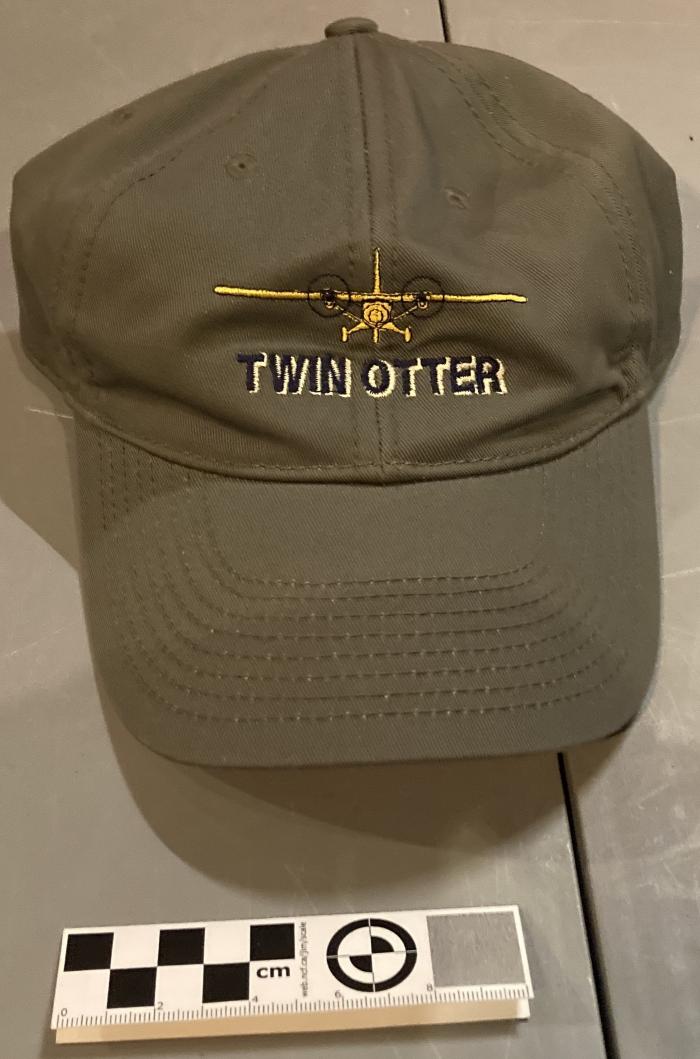Baseball Cap
Object
2024.4.23
Grey-brown baseball cap with a logo reading "TWIN OTTER" underneath a yellow double-engined plane across the front
As the Otter improved upon the Beaver, so too did the Twin Otter improve upon it. With two turboprop engines instead of one piston-driven, the newer model boasted greater horsepower, and by extension greater power. The first three series (100-300 models) and their variants were produced between 1965 and 1988, while the fourth series, with slightly larger schematics, began production in 2008 and continues today! It can be said with certainty that the Twin Otter was designed well, and hundreds of them have since fanned out and can still be found servicing smaller, more isolated or less-populous centres across the globe! Between passengers, freight, mail, skydivers, surveyors, soldiers, emergency-responders, and so much more, this plane can fill any niche within short-to-medium distances. The specifications for the 400 series (the most recent one) are as follows:
Length: 51 ft 9 in (15.77 m)
Wingspan: 65 ft 0 in (19.81 m)
Height: 19 ft. 6 in (5.94 m)
Empty weight: 7,100 lb (3,221 kg)
Gross weight: 12,500 lb (5,670 kg)
Fuel capacity: 378 US gal (1466 L) 2,590 lb (1,175 kg)
Engine: 2 × PT6A-34 turboprop, 750 hp (559 kW)
Cruise speed: 337 km/h (182 kn) at 5,000 ft (1,524 m)
Range: 920 mi (1,480 km, 799 nmi) full internal fuel at 5,000 ft (1,524 m)
Highest Altitude: 25,000 ft (7,620 m)
Take-off distance to 50 ft (15 m): 1,200 ft (366 m)
Landing distance from 50 ft (15 m): 1,050 ft (320 m)
Length: 51 ft 9 in (15.77 m)
Wingspan: 65 ft 0 in (19.81 m)
Height: 19 ft. 6 in (5.94 m)
Empty weight: 7,100 lb (3,221 kg)
Gross weight: 12,500 lb (5,670 kg)
Fuel capacity: 378 US gal (1466 L) 2,590 lb (1,175 kg)
Engine: 2 × PT6A-34 turboprop, 750 hp (559 kW)
Cruise speed: 337 km/h (182 kn) at 5,000 ft (1,524 m)
Range: 920 mi (1,480 km, 799 nmi) full internal fuel at 5,000 ft (1,524 m)
Highest Altitude: 25,000 ft (7,620 m)
Take-off distance to 50 ft (15 m): 1,200 ft (366 m)
Landing distance from 50 ft (15 m): 1,050 ft (320 m)
